Animal spirits are running loose.
-
Bitcoin just hit all-time highs;
-
NFTs of penguins and monkeys selling for over $500k;
-
Virtually bankrupt stocks like Carvana (NYSE:CVNA) rallying to the moon;
Investors Aren’t Thinking Macro At All Recently
They aren’t overweighting assets with better balance sheets or higher profitability, or going after companies because of their earnings growth profile.
Instead, they are busy sending Bitcoin, Gold, and other non-cash flow-producing assets to the moon despite risk-free rates sitting at 5.25%.
Is this as unusual as it sounds?
Not really.
In 1999 and 2007 animal spirits were running loose as well.
Do you want to guess where risk-free rates were back then?
Yup: north of 5%.
And it didn’t end well.
But Animal Spirits Are Hard to Defeat
Yes - you can have a healthy 4-5% drawdown in stock indexes but if you want the tide to turn you need proper macro volatility events.
So let’s take a look at the big macro events looming large ahead of us.
US Macro Data and the Fed Reaction Function:
This week we’ll have the new US CPI data for February, and that will be a crucial data point to shed light on the disinflation process.
Was January a statistical aberration due to seasonal price resets, or is the disinflationary path stalling?
In the meantime, we got quite an interesting US job market report on Friday.
On the surface, the nonfarm payrolls Payroll report produced another friendly outcome for the Fed and markets.
-
223k private sector jobs created
-
Only 0.1% MoM wage growth
-
Downward revisions to what seemed to be a super hot January
Here is the key chart which shows the most important elements of the NFP report:
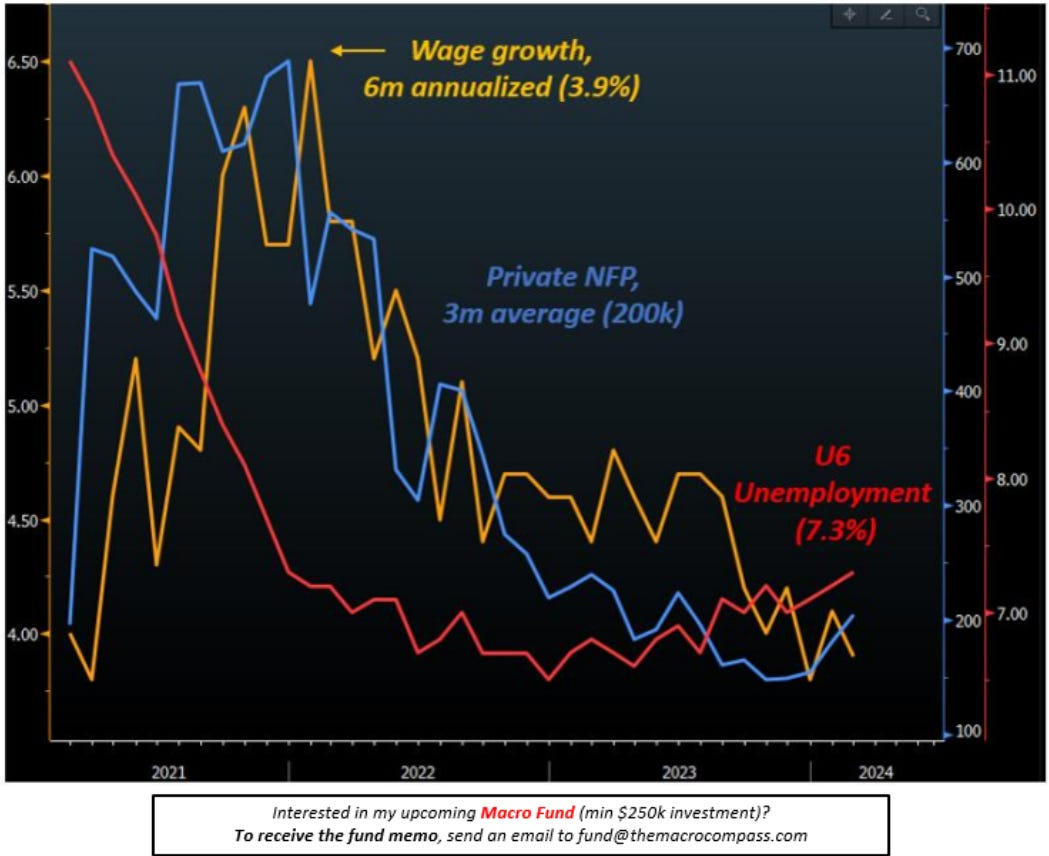
The 3-month average print for private sector job creation (blue, RHS) is a nice +204k, slightly up from the late 2023 lows.
Wage growth seems to be headed towards the 3.5% underlying trend which was consistent with 2% inflation before the pandemic.
The 6-month annualized trend in wage growth (orange, LHS) printed below 4%.
This is all the Fed wants to see: an okay amount of new jobs created, and wage growth moderating to help them achieve the 2% target.
But there are a couple of worrying things going on under the surface.
See that red line?
That’s the U6 unemployment rate - also known as the broad underemployment rate.
The U6 rate is a broader definition of unemployment.
It includes not only the unemployed but also those who are working part-time for economic reasons and those who are marginally attached to the labor force.
It’s steadily ticking higher.
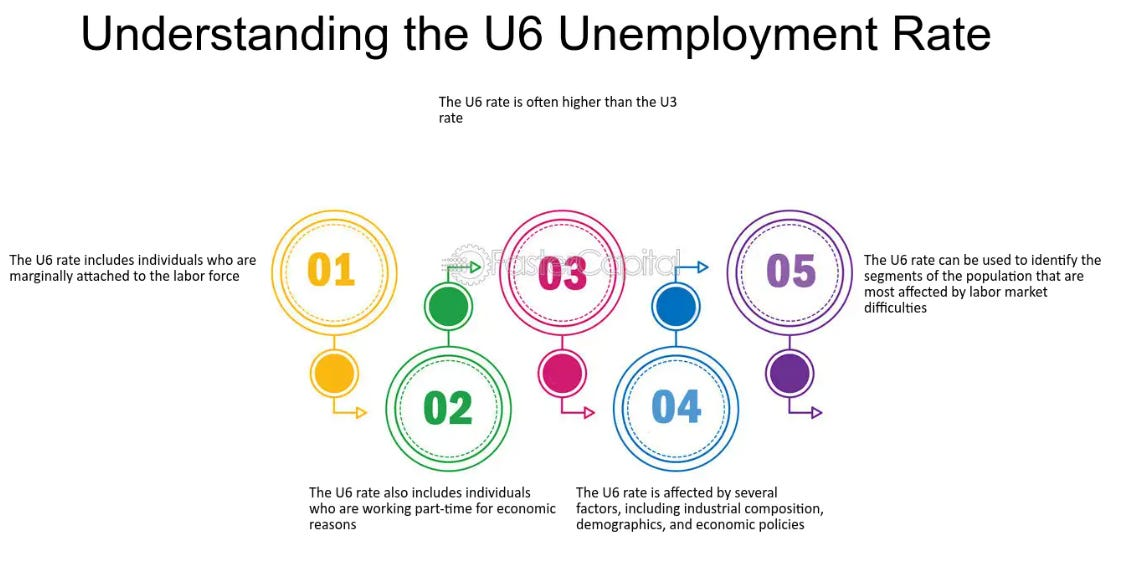
Additionally, cyclical industries hiring trends are very weak.
Full-time hiring in manufacturing, trading, transportation, construction, and similar sectors is the weakest since 2011.
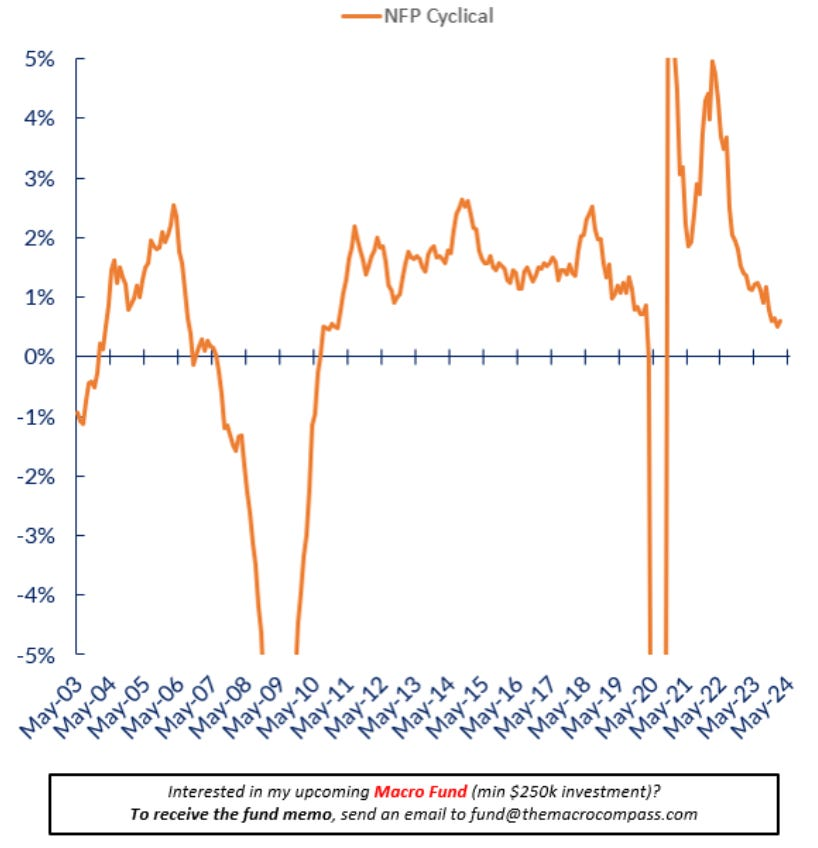
Softer (as long as not recessionary) job market conditions can even be positive for market sentiment…as long as the Fed accommodates accordingly.
And this is where I think a potential risk ahead might lie.
We are hearing the first rumors: some Fed officials think ‘‘this time is different’’.
When you start hearing FOMC members discussing the potential for ‘‘higher neutral rates’’ it means they think something structural has changed in the US economy.
They start to believe the US economy can bear much higher interest rates without harming its potential to sustainably generate 1.5-2.0% real GDP growth.
A very recent BIS paper blended 4 models to estimate where r* (the real equilibrium rate for the economy) sits in the US.
The Fed thinks it’s at +0.5%.
The BIS models disagree: they point to a higher +1/+2% range.
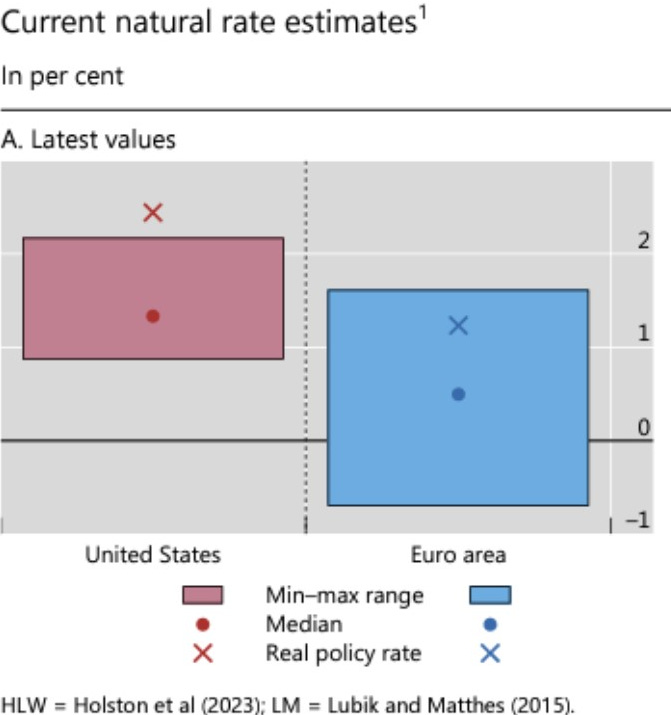
If more Fed officials marry the idea that neutral US rates are higher, this means that the cutting cycle will be shallow and short.
A bit like in 1995.
Back then, the Fed cut interest rates only 3 times and it took a multi-year pause after.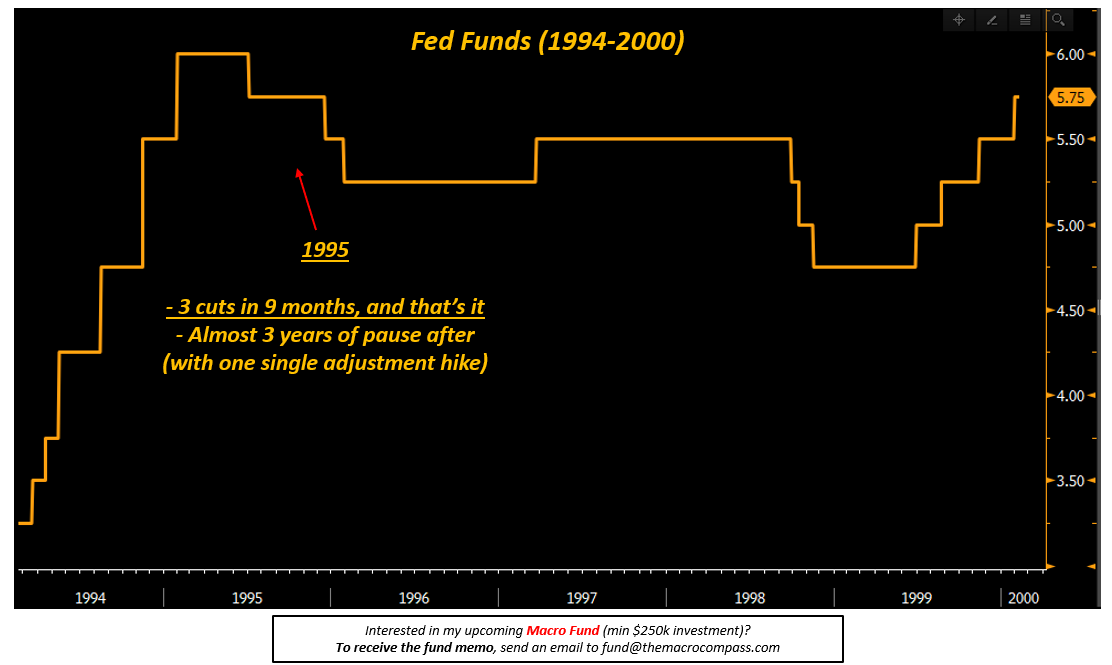
Today, animal spirits are also fed by a more friendly bond market pricing.
Markets are pricing 3-4 cuts this year, 4 more next year, and some more after that in 2026 and 2027.
What if the Fed decides to go 1995-style hence disappointing markets right when the underlying weakness in the job market is starting to show up?
Europe Playing With Fire
Eurozone’s GDP growth printed at another meager 0.0% in Q4 2023.
The European economy is flat like a pancake, and some countries are basically in a recession already - especially the ones that are highly exposed to China, manufacturing (Germany), or the real estate market (Finland).
Yet, the ECB keeps telling us it’s too early to proceed with interest rate cuts.
Lagarde won’t admit it publicly, but like many other colleagues, she’s looking at Powell to give his green light for cutting rates.
And while she waits, growth and inflation keep trading lower while ECB rates remain prohibitively high - policy keeps tightening for the real economy.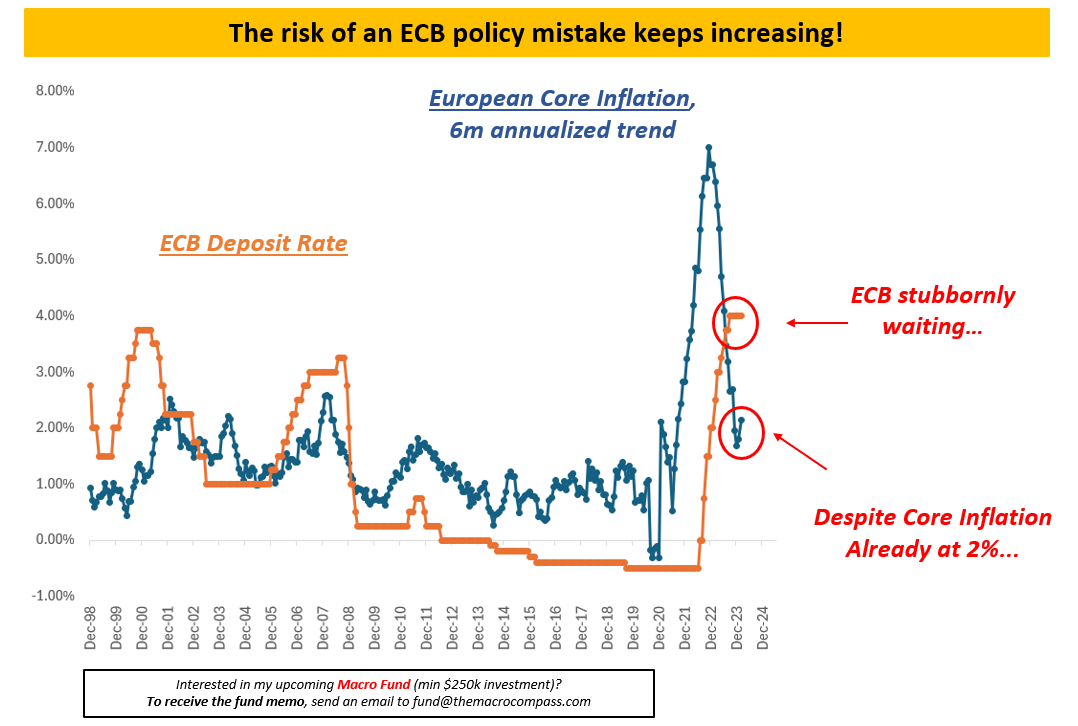
An ECB deposit rate of 4% while core inflation is already trending at 2% for quarters effectively imposes a policy rate of +2% in real terms (!) on a very fragile European economy.
The last time ECB rates (orange) were above the underlying trend of core inflation (blu) for a sustained period was 1999 or 2007.
It didn’t end well as Europe isn’t equipped to handle largely positive real policy rates for too long.
Japan Matters
Finally, a few words on Japan.
We are getting more and more headlines: it seems the time is ripe for Japanese authorities to try and exit from negative interest rates.
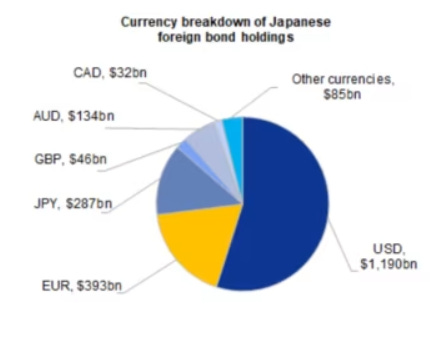
Japan Is One of the Largest Capital Exporters in the World
It owns over $2 trillion of foreign bonds.
Over $1 trillion in US bonds, and about ~400 billion in EUR bonds too.
Were the BoJ to put down a credible and prolonged normalization plan for domestic interest rates, Japanese investors’ incentive schemes would change.
Starved from decent yields at home, Japanese insurers and pension funds have flooded foreign bond markets with buying flows.
But with 30-year JGB yields already at +1.75% and potentially headed higher the risk of capital repatriation into domestic government bonds is not small.
This would be a tectonic shift for global bond and FX markets.
Conclusion
Animal spirits are running loose.
Investors aren’t thinking macro, and going after assets with no cash flows despite risk-free rates being north of 5% - exactly like in 1999 or 2007.
And while animal spirits are hard to kill, several macro volatility events loom large.
The Fed’s shift to a 1995 short-cutting cycle, the ECB's stubbornness, and potential tectonic shifts brought by a Bank of Japan hawkish tilt are only some of the volatility events ahead of us.
Stay vigilant.
Disclaimer: This article was originally published on The Macro Compass. Come join this vibrant community of macro investors, asset allocators and hedge funds - check out which subscription tier suits you the most using this link.
